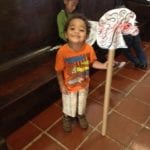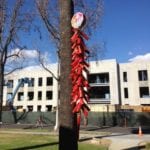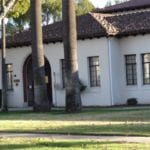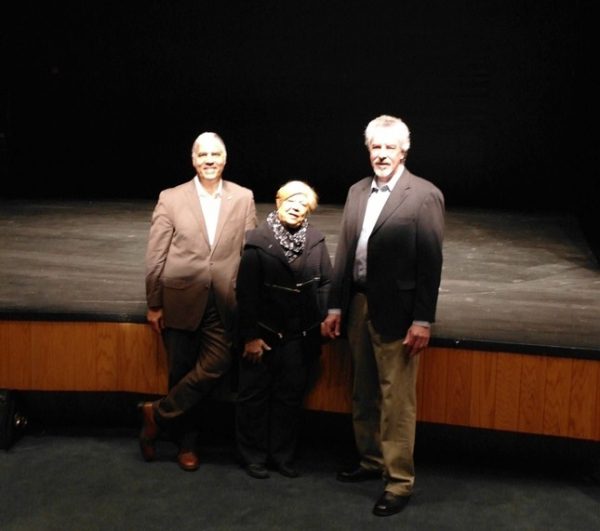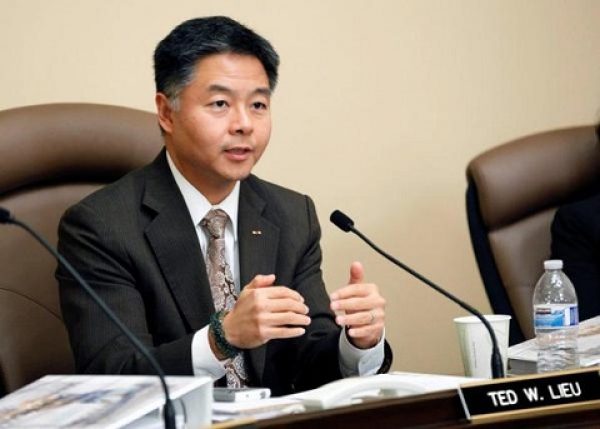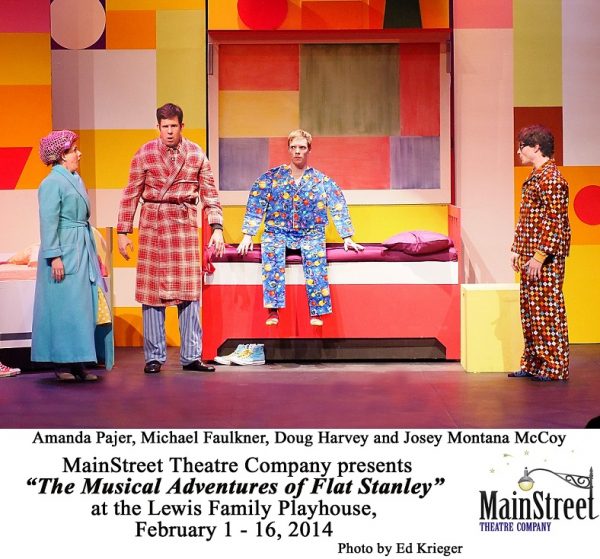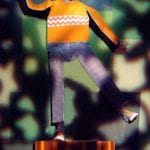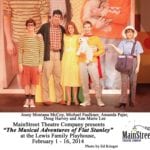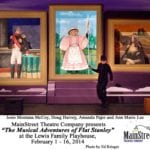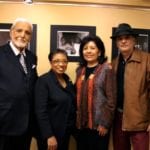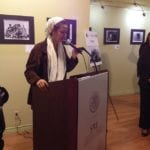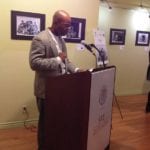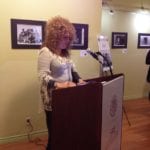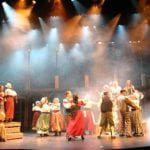
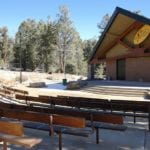
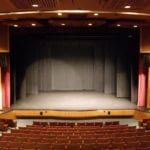

Drawing over 6 million visitors a year, Big Bear Lake is Southern California’s favorite alpine and winter sport resort. It has the largest recreational lake in Southern California and yet with the year round tourism, few people know about Big Bear Lake’s unique local arts community and passionate Arts Council.
The Arts Council of Big Bear Valley has evolved during its 26-year history. When it was first organized in 1988 as Friends of the Performing Arts Center its purpose was to raise funds for the newly completed Performing Arts Center, an impressive venue with great productions to offer the small town of roughly 5,000 residents.
In order to expand their mission to include support for all of the arts, in 1998 The Friends of the Performing Arts Center became the Arts Council of Big Bear Valley (ACBBV for short). Since then they have been the centerforce for advancing the local arts community in Big Bear Valley, donating over $20,000 to the PAC for equipment upgrades, $10,000 in musical instruments to local high schools, establishing art education programs for schools, promoting local youth and talent, and producing relevant events to keep art a strong presence in the alpine town.
I had the pleasure of meeting with the Arts Council Executive Director Gail McCarthy, President Tim Breunig, and Big Bear City Manager Jeff Mathieus, who spoke with me about The Arts Council of Big Bear Valley, the Performing Arts Center, and more.
Esther: What are some art initiatives and upcoming events you are currently working on?
Gail McCarthy: Our current projects are Art on the Lake, which is going into its 15th season, and the Artwalk Festival. Art on the Lake is a summer arts program in August, and the Artwalk Festival, Tim’s project, is in July. Both recently moved to the new Bartlett Events Center and what was only a parking lot before, now accommodates the sizable events. The City came through with sufficient electricity and water needed for two great shows.
Tim Breunig: The Arts Festival has been improved upon with the addition of a main stage where we can now have bands perform, and the city of Big Bear Lake put in about 4.5 million dollars worth of new improvements and renovations to the Village Events Center just about last October. The Village is the heart of Big Bear Lake’s shopping and dining, but also is the new site for the two art festivals. The city put in all new streets, sidewalks, lighting, landscaping and trees- really a lot of money into the infrastructure. We’re looking to be a better partner and have a better partner in the city, like many communities do.
Jeff Mathieus: We also have the Pasadena Youth Symphony Orchestra performing this weekend and in March. They are a group of 110 musicians in grade school and this is their second year performing at our Performing Arts Center. It’s a free event for the community and a good example of the type of programming we have here.
Esther: How would you describe the arts community of Big Bear Lake?
Jeff: Locally, there is Big Bear Theatre Projects, Big Bear Strings, which is dedicated to the youth, and have been to Carnegie Hall and Europe. The Young American Dance also recruit local talent. To take a community and be able to express it the way Big Bear does is very unique. We have a finger on one or two things to touch on all of the expressions of art, and it’s not just importing in, but really about fostering and celebrating the local. We have a wide spectrum of the arts (dance, music, theatre, visual arts, crafts). There is a jazz component every year as we have the Jazz Festival on the Lake, and there is the Starlight Festival, among many more. We try to provide different stages to the community; we have a converted movie theater – The Cave, Big Bear Discovery Center, Knickerbocker Mansion, and the Performing Arts Center (PAC).
Gail: In the Village we have The Gallery for visual artists as well, and of course the summer Art Festivals are important. What is interesting is that because we are a resort destination, every week we get a very different crowd coming through, wo we try to offer a bit of everything.
Esther: What do you want to promote and accomplish in your community through the arts? What are some trials or obstacles that you anticipate and how will you approach overcoming them?
Jeff: There is a vibrant “off the hill” presence in Big Bear Lake, many people own second homes here and one of our goals is to get them involved with the arts here. We are also interested in having more off the hill theatre projects.
Tim: We want to enhance the relationship with the city and create an awareness and engagement campaign, not only with residents but with a lot of second homeowners. There is a huge marketplace for such a small town to encourage people to participate on the same level. In terms of programs now, the public arts program has been seeking space for the traveling exhibits throughout the season. We are also interested in an arts garage concept that is multi-purpose, that can have a kids art camp, summer programs to keep local kids engaged throughout the summer season in ways they don’t get in the school season. An arts garage would be perfect for the local feel. And finally, we are interested in getting corporate sponsorship for the arts here. We have the capacity to not only be a larger art presence, but to become an art destination as well.
Gail: We would like to work more with Arts Connection, for a larger picture, as well as with the city. We want to sort of reinvent ourselves and have more opportunities to branch out. We have the space for residencies, a small budget, and lodging for artists who would be interested in staying 2-4 days to teach classes. And in terms of visibility and awareness, for example Knickerbocker Mansion, one third of the people who live here don’t know about it. For some locals it can take 22 years of living here before finally going there.
PERFORMING ARTS CENTER of BIG BEAR LAKE
We continued our conversation at the Performing Arts Center, where Erica Stephenson, finance supervisor of the PAC, joined us. Erica pointed out PAC’s unique 360 degree rotating stage which is capable of having three different sets at the same time, a detail that allows for high production programs. The recent technical upgrades to the venue included a fog machine donated by the Arts Council, new mics, and programmable digital light and sound board. The care and excellent maintenance of the PAC spoke volumes about the dedication of the city and the Arts Council.
Gail: It just strikes me, that since 1988 when this space was completed, it’s basically been very forward thinking people, because everything that you’re capitalizing on now was basically here, just waiting to be expanded and added to, and put into use.
Erica: We have a full movie screen that is used for our popular international film festival. We also have a horrified film festival for that genre. Locally, we hold pageants, high school awards shows, and school talent shows. Just a myriad of productions. The salvation army has a camp and then they get to come here and be on a stage and let their families come and see what they have learned, and so it’s really a good opportunity for our local youth, especially in a small town, to get a state of the art in theater to perform on to see if it’s something they want to pursue in school. So we are really proud that we can offer that to our local youth (with the PAC).
Jeff explains the other stages they offer in the community and why.
Jeff: To have multiple stages throughout the community is important because this (Performing Arts Center) is very daunting and very large. And while there may be a solo speaker like a Steve Jobs type to come here and command a stage it’s very difficult, and with our smaller productions we want more intimacy. That is why we have the recital hall, the outdoor amphitheater over at the Discovery Center, and why The Cave and the entertainment venue that it is really complement what we have here. The PAC can hold and does hold 100, 120 people on a stage with a major production, large cast, and has the technical capacity to bring a lot of props in here, but we need to match the right performance with the right venue. We feel so lucky that we have a large venue like the PAC to accommodate, but at the same time it’s really a holistic arts community because of the multiple stages and opportunities.
Esther: You mentioned that you have an International film festival, how often do you try to bring outside, down the hill talent, and how is that incorporated into the local arts community here?
Jeff: What’s beautiful is that especially in the last seven or eight years, it’s not so much bringing in off the hill as it is germinating, growing something within the hill. Big Bear Film Festival has a lot of folks that work for dreamworks that live here. Our folks that are major screen actresses like Shirley Jones and others that live here. We want to do something here in our own community, and we want to do what is related back to Big Bear. Giving the example of the Pasadena Youth Symphony Orchestra coming here this weekend. it’s a product really of what we have here with the Big Bear Strings. More and more of what we have is indigenous to the folks that are here, and we will develop.
Tim: No doubt it would be one of our goals to create the venue, create that kind of opportunity for that type of thing to happen where people come to, and think of, Big Bear as not only a recreational destination, but as a destination for the arts. All genres across the board, and creating these visual art festivals, media and film festivals. During the last year we added a music component to the art festivals to attract regional indie, acoustic, folk country, and jazz talent to come to Big Bear and play for our visitors. Because we are about visitors, and entertaining and creating a great experience for our visitors and enhancing the rich cultural environment for the folks that live here as well. How many visitors do we get?
Jeff: Over the course of an annual period it is an excess of 3 million. And again, trying to capture and to have a variety of different offerings that are beyond sports and recreation, although we celebrate that too, but to tap into those who want to enjoy something finer. That’s the expression of everything that we have been trying to do here.
Be sure to check out the summer festivities starting in July with the 2014 Big Bear Lake Artwalk Festival!
http://bigbearlakeartwalk.com/about/
